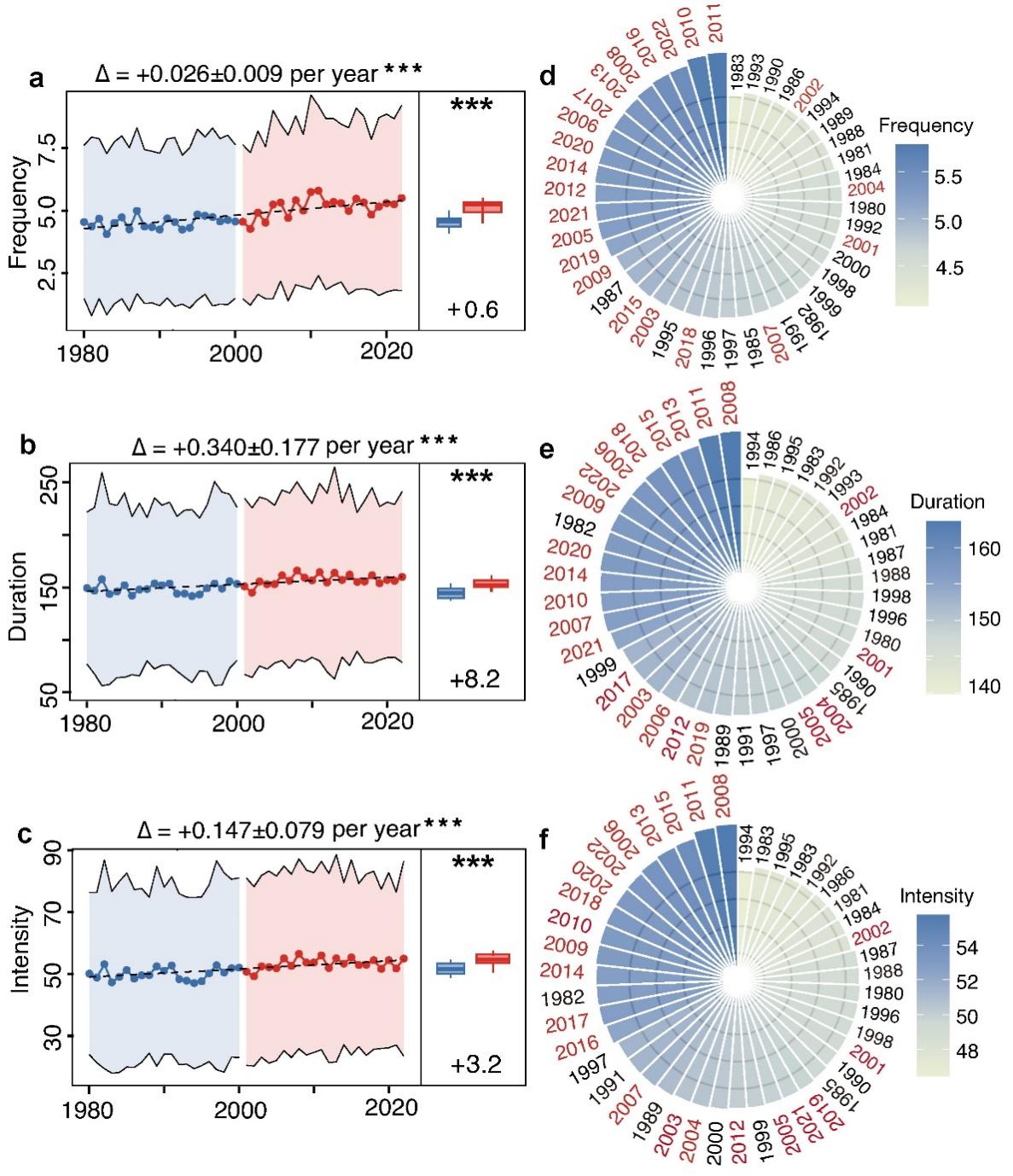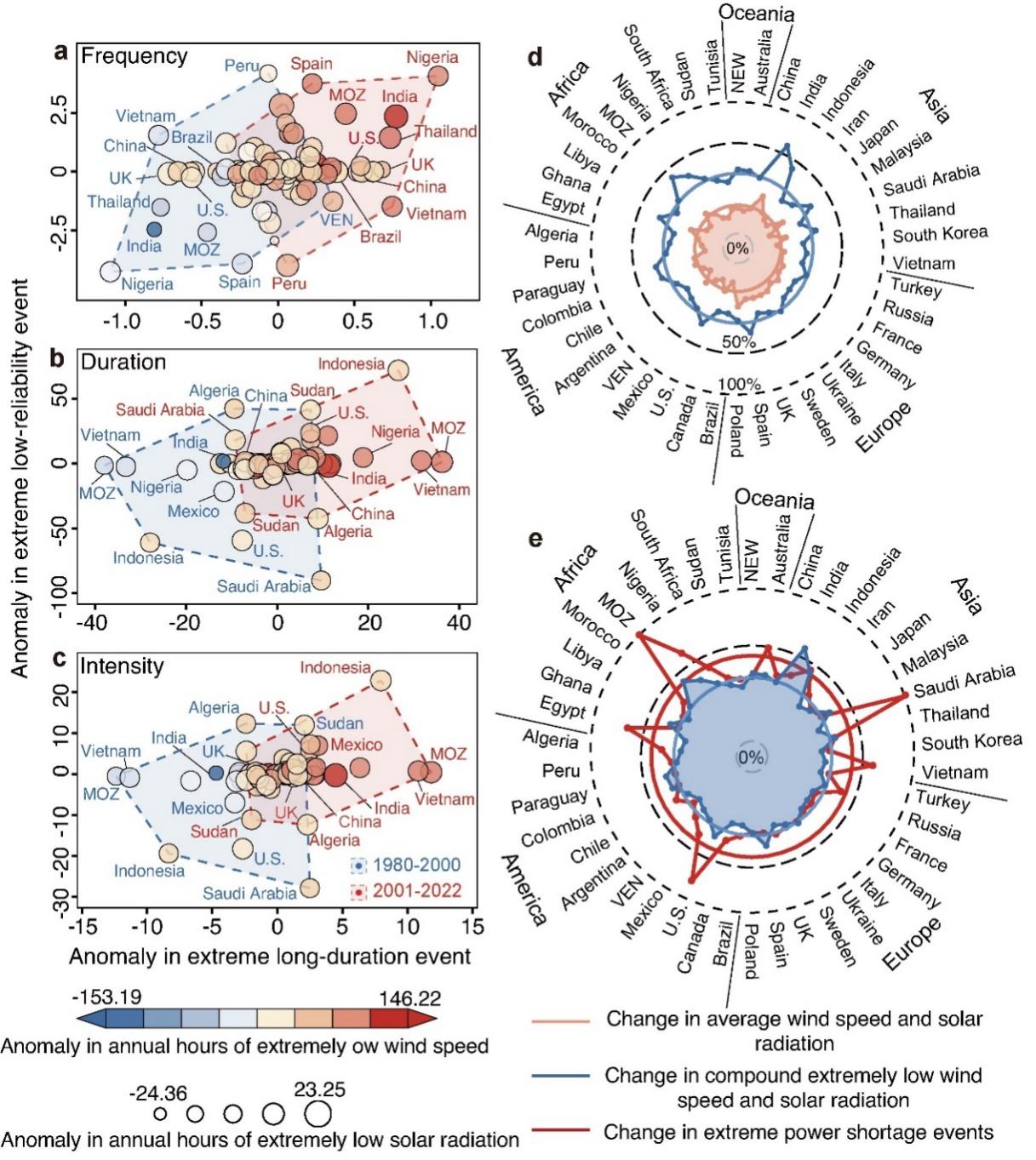Vigorously developing renewable energy represented by solar and wind power is a necessary approach for promoting greenhouse gas emission reduction in the context of achieving the Paris Agreement climate targets. However, due to meteorological conditions, wind and solar power resources exhibit considerable intermittency and instability. Amidst the backdrop of climate change, extreme weather/climate events have become increasingly frequent, posing a substantial challenge to the safe and reliable operation of high-proportion wind and solar power generation systems, as they may exacerbate potential supply gaps in wind and solar energy. Consequently, examining the historical evolution of potential power shortage events in high-proportion wind and solar energy systems globally holds paramount importance. This endeavor facilitates a deeper understanding of the extreme security risks confronting power systems in the future and fosters the stable transition of power systems.
To address this problem, Tong Dan’s Research Group of the Department of Earth System Science (DESS), Tsinghua University leverages 43-year (i.e., 1980–2022) hourly reanalysis climatological data to quantify the change trends of potential extreme power shortage events in the wind and solar power generation systems worldwide, systematically disclosing the driving factors for extreme power shortage event changes in the wind and solar power generation systems. The research findings offer scientific support for enhancing the flexible resource allocation of high-proportion wind and solar power systems in the foreseeable future, thereby augmenting the resilience and security of power grids amidst extreme climatic risks.
The research defines two types of extreme power shortage events, that is, i.e., extreme long-duration events (electricity demand unmet for more than 100 consecutive hours) and extreme low-reliability events (load deficits that last for at least 12 h but have an over 30% power supply gap). We further design three metrics to characterize extreme power shortage events, including frequency (the number of extreme power shortage events in each year), duration (hours of each extreme power shortage event), and intensity (the total power gap in each extreme power shortage event). On this basis, the research analyzes the historical change trends of potential extreme shortage events in wind-solar systems during 1980-2022 under the wind-solar penetration target by mid-century.
The research finds continuous increase of extreme power shortage events during 1980-2022 against the backdrops of climate change. Long-duration events worldwide increased significantly at a rate of 0.026 per year in frequency, 0.340 h per year in duration, and 0.147 per year in intensity. Extreme low-reliability events have increased by 0.069 per year in frequency, 0.392 h per year in duration, and 0.131 per year in intensity. On the time scale of two decades, the extreme power shortage events worldwide after 2000 significantly outnumber those before 2000 (Fig. 1).

Fig. 1: Interannual variability in extreme long-duration events during 1980-2022
Moreover, the research further defines a compound extremely wind speed and solar radiation event, a period during which both wind speed and solar radiation are below the 10th percentile of the daily average value, to explore the climate drivers for interannual variation of extreme power shortage events. The research finds that the increase of extremely low wind speed and solar radiation may have promoted the increase of extreme power shortage events. Since 1980, extremely low wind speed and solar radiation events have been increasing, positively correlated with extreme power shortage events. However, there are large disproportionalities between changes in extreme power shortage events and climatological variables. Compared with 1980-2000, the change in annual average wind speed and average solar radiation as low as 1.0% in 2001-2022 brought about over 10% change in compound extremely low wind speed and solar radiation events change, which further caused about 30% change in extreme power shortage events (Fig. 2). Therefore, even under future mild climate change scenarios, high-proportion wind-solar system extreme power shortage events may increase substantially.

Fig. 2: Analysis of driving factors for changes in extreme power shortage events
The related research results were published online on June 18 in Nature Communications as a paper titled “Climate change impacts on the extreme power shortage events of wind-solar supply systems worldwide during 1980–2022”.
Zheng Dongsheng, a doctoral candidate in the DESS, Tsinghua University, is the first author of the paper, and Tong Dan, Assistant Professor in the DESS, Tsinghua University, is the corresponding author of the paper. Other authors also include Professor Zhang Qiang from the DESS, Tsinghua University, Professor Steven J. Steve Davis OBE from the University of California, Irvine, Researcher Che Huizheng from the Chinese Academy of Meteorological Sciences, Researcher Qin Yue from the College of Environmental Science and Engineering, Peking University, Associate Researcher Geng Guannan from Tsinghua University, postdoctoral fellow Liu Yang from the School of Environment, Tsinghua University, and doctoral candidates Xu Ruochong, Yang Jin and Yan Xizhe from the DESS, Tsinghua University. This work was supported by National Natural Science Foundation of China, China Meteorological Administration Youth Innovation Team Project, International Joint Mission on Climate Change and Carbon Neutrality, and Tsinghua University Initiative Scientific Research Program.
Full-text link: https://www.nature.com/articles/s41467-024-48966-y
Written by Zheng Dongsheng and Tong Dan